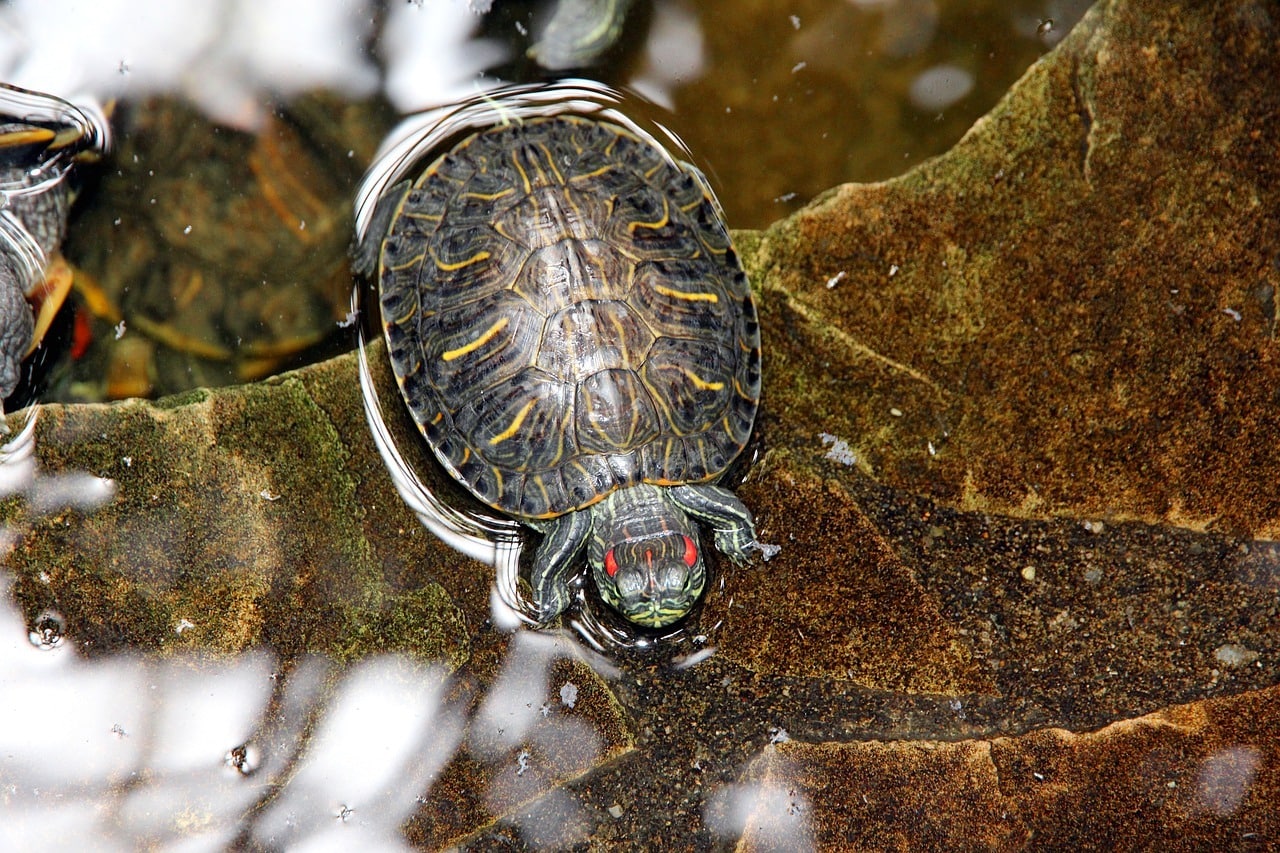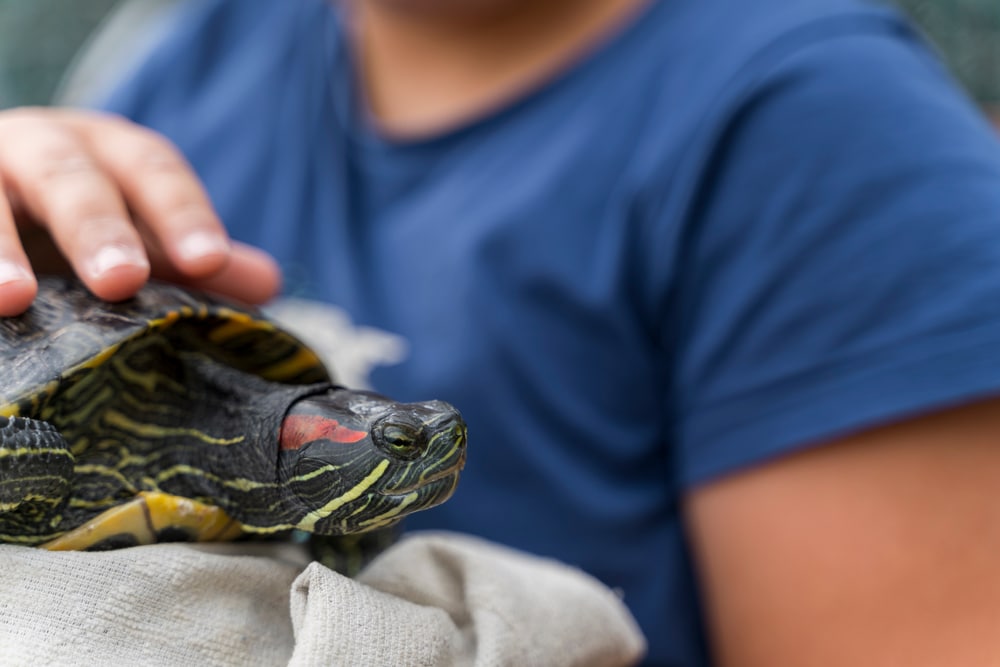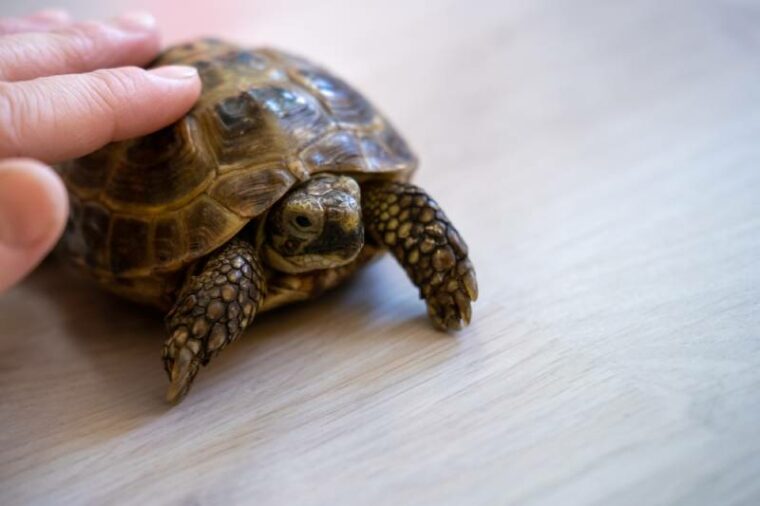
Turtles and tortoises are popular pets all over the world. One question many have about these reptiles is whether they can feel their shell if, for example, you scratch or pet them. The answer is a resounding yes! Even though it’s hard and quite sturdy, a turtle’s shell is able to perceive various types of stimuli, including touch.
You can keep reading to discover how the amazing creatures feel through their thick, hard shells and how to ensure that you don’t cause your turtle any pain when you handle them.
How Do Tortoises and Turtles Feel Their Shells?
A tortoise or turtle’s shell is made of modified bone, including the ribs, parts of their pelvis, and other bones found in almost all reptiles. The bone of a turtle’s shell contains not only skeletal bone but also dermal bone (sometimes known as membrane bone). The top of the shell is known as the carapace, and the bottom is known as the plastron.
Over the shell are plates called scutes, which are made from the same material as your fingernails, keratin. The origin of a turtle’s bone seems to be an evolutionary adaptation. The shell forms during the embryonic stage of a turtle’s life and is, in the simplest terms, a modification of the rib cage.
A turtle’s shell has nerve endings that enable it to transmit stimuli information to the central nervous system. Through this mechanism, the animal can feel their shell. In addition, they can, to an extent, “hear” via their shell, as sound vibrations on their shell can be picked up by their ears1. This gives turtles greater spatial awareness and enables them to adjust themselves accordingly.
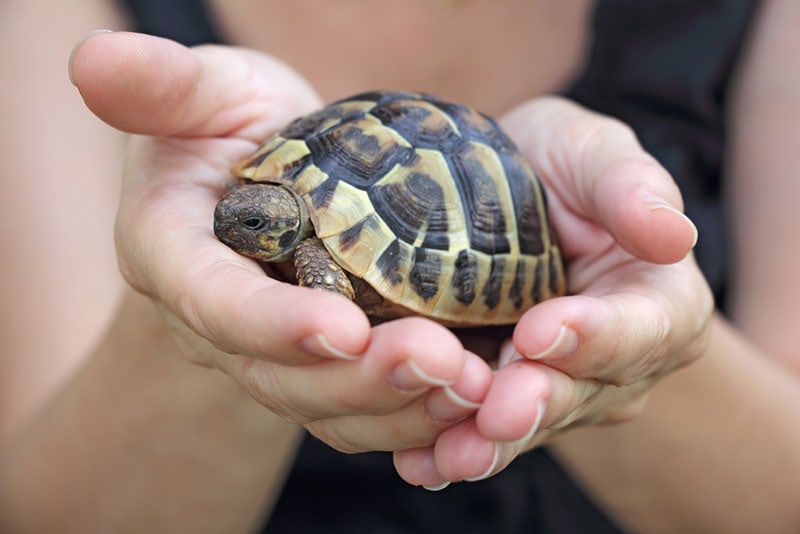
How Sensitive Is a Turtle and Tortoise’s Shell to Touch?
According to researchers and scientists, the shells of tortoises and turtles are incredibly sensitive. If, for example, you scratch their shell, a turtle will sense the scratching as easily as if you were scratching their bare skin. In effect, their shells are highly sensitive to touch.
Tortoises and turtles feel it when you scratch, stroke, or tap on their shells. Veterinarians recommend handling both reptiles gently and carefully, making sure not to drop them, hit them forcefully, or touch them in a way that might cause your turtle or tortoise to become alarmed or stressed.
Please note that since turtles may naturally harbor Salmonella, it is advised to only handle them when absolutely necessary.
Can Turtles and Tortoises Feel Pain Through Their Shells?
Knowing that turtles and tortoises can feel their shells, it’s not a large leap to realize that they can also feel pain via their shells. Many turtle owners don’t realize this or don’t believe reptiles feel pain. Sadly, many have also done things like drill holes in a turtle or tortoise’s shell to carry them more easily or chain them up so they can’t escape.
You should not drill, cut, or otherwise damage a turtle or tortoise’s shell in any manner since it can be excruciating.
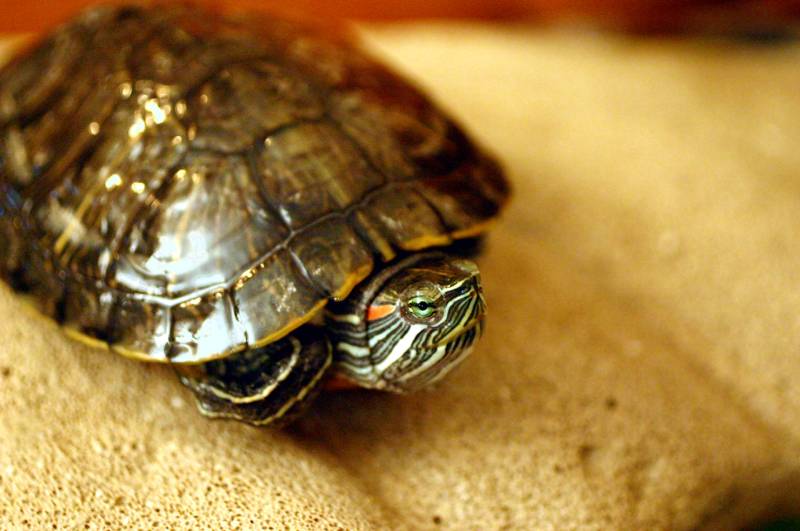
Do Tortoises and Turtles Feel Pressure Through Their Shells?
Just like you can feel it when, for example, someone puts pressure on your toe, a turtle or tortoise can feel pressure through their shell. So, for example, if you place a large rock on top of a turtle or tortoise (please don’t), they would indeed feel the pressure and likely feel very uncomfortable.
Should You Paint a Tortoise’s or Turtle’s Shell?
Many turtle and tortoise owners, especially those with children, paint their pet’s shells as a fun activity. However, that is a very bad thing to do. The reason is that, like humans and many other animals, these reptiles convert the sun’s UV rays into vitamin D. Vitamin D is essential for their health and wellness, and without it, their health will suffer.
In effect, painting a tortoise or turtle’s shell will block UV rays from passing into their body and thus prevent them from being able to make vitamin D. This, in time, can lead to bone deformities, a weakened shell, and other health issues.
Many paints can also have toxic chemicals or substances that can seep through the shell (especially if a turtle is about to shed) and cause toxicity or adverse effects on your turtle’s health. In short, never paint your pet tortoise or turtle’s shell; if you have, remove the paint as soon as possible.
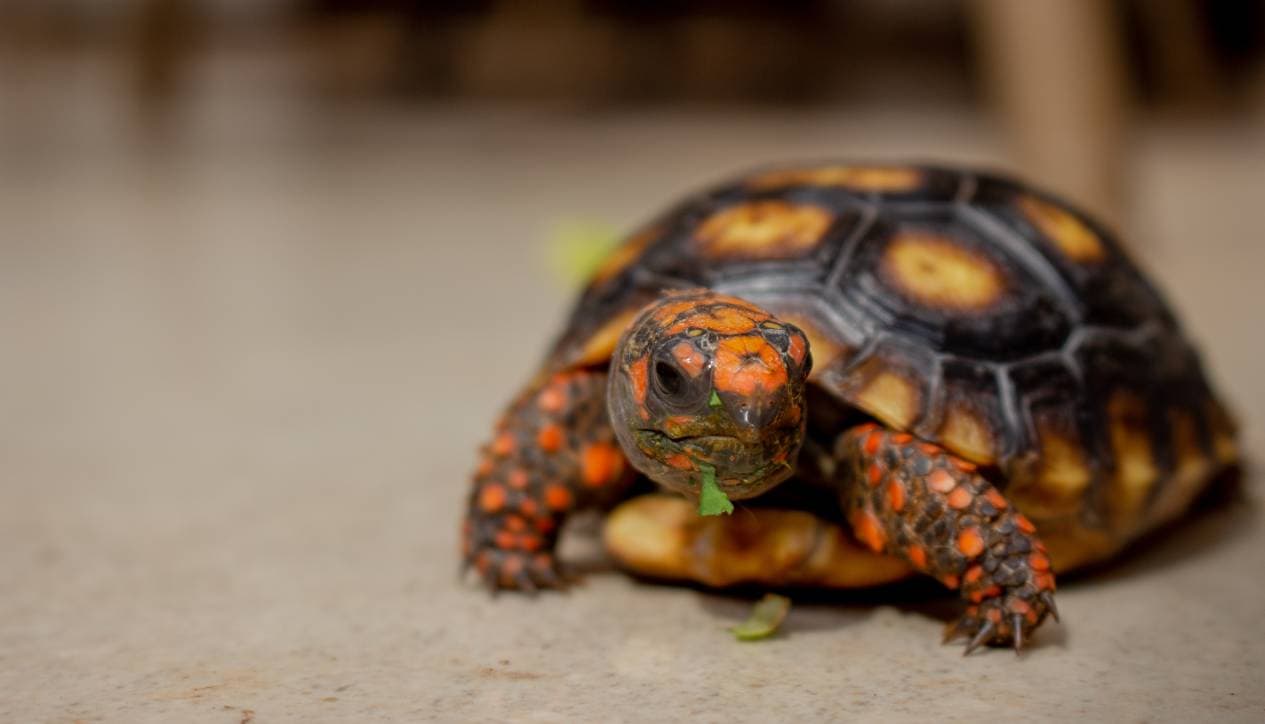
Can Turtles and Tortoises Come Out of Their Shells?
This is a question many pet owners have, and the answer is that neither the turtle nor the tortoise can come out of their shells completely. Yes, they can stick out their heads, feet, and tails, but that’s just extending them.
Just like your tongue is attached to your body and isn’t removable, a tortoise or turtle’s shell is completely attached to the rest of their body and is not made to be removed for any reason.
The individual scutes of turtles shed as they grow, and sometimes, they may shed in response to a disease or nutritional disorder. The scutes of a tortoise’s shell never shed.
Should You Pick Up a Turtle or Tortoise by Their Tail?
Many people believe that, to move a turtle that might be able to bite, you should pick it up by its tail. This, however, is 100% false. Just like their shell is part of their skeletal system, a turtle or tortoise’s tail is part of their spinal cord and spine. Picking them up by their tails could paralyze or even kill a turtle or tortoise, so you should never attempt to do it.
If you need to move a turtle or tortoise, the best way to do it is to begin by ensuring that your hands are clean and dry. Next, gently grab the edge of their shell around the midpoint, and lift it slowly. Be aware that many turtles and tortoises will urinate when picked up, so expect it and don’t drop them if they do. Move them where you want them to be, and then wash your hands.

Final Thoughts
As we’ve learned, tortoises and turtles can feel through their shells, including touching, scratching, and pressure. They also feel pain, so you should never drill or cut into a tortoise or turtle’s shell for any reason.
The shell is an integral part of their skeletal system. It’s also their armor and protection from predators and has nerve endings and keratin. We hope this information has been enlightening and given you food for thought about your pet turtle or tortoise and how they experience the world around them.
Featured Image Credit: tamiti, Shutterstock


